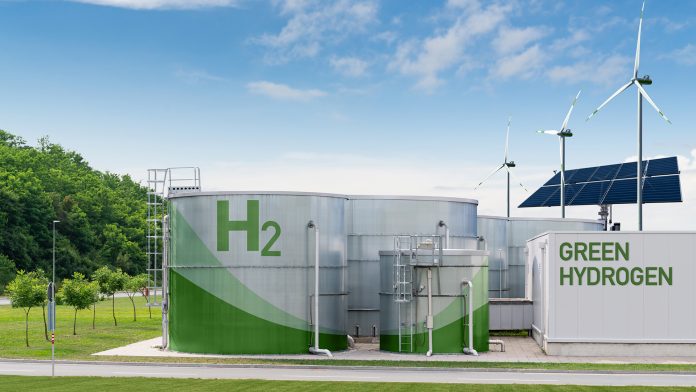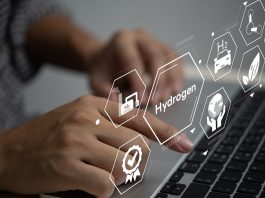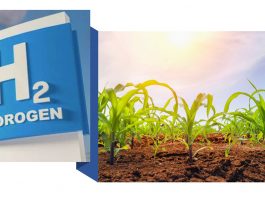Proteum Energy produces low CI green hydrogen from renewable ethanol.
Proteum Energy is a progressive company aware of the global challenges we face with climate warming. They have a mission to produce low-cost renewable, clean hydrogen. By leveraging known technology with proprietary reformation controls, many of the challenges related to producing renewable, clean hydrogen are solved at affordable rates.
Innovation News Network had the opportunity to talk to Proteum Energy’s co-founder and CEO, Larry Tree, about the company’s use of innovation in clean energy.
How did Proteum Energy get its start? How did the idea to start a clean energy company come about?
Proteum Energy started as a corporation formed from the bankruptcy and closure of Advanced Green Innovations (AGI) in August 2020. Part of the technology platform at AGI included a flare gas remediation technology called Flare to Fuel.
Within this technology, there was a heavy hydrocarbon reactor configuration. This reactor configuration produced hydrogen-rich syngas, and it was determined that this syngas, derived from non-methane hydrocarbons, could be a useful building block for renewable hydrogen production.
With the urgent need to protect the planet, how do you manage to make clean energy affordable and accessible to all?
One of the keys to producing cost-effective renewable hydrogen from an oxygenated hydrocarbon like ethanol is the ability to manage the various reformation reactions. This is where the intellectual property associated with the Proteum Energy – Hydrogen Designer Fuel (HDF) technology shines. Approximately 15 billion gallons of renewable ethanol are produced in the US every year.
Ethanol is used primarily to blend with motor gasoline to reduce emissions. With the massive growth in the EV market, there comes the common denominator of reducing motor gasoline in automobiles, and the Proteum Energy technology provides a unique opportunity for ethanol producers to leapfrog’ the motor gasoline blending market.
Over $70 million has been invested into a proprietary technology where ethanol producers now have the option to profitably sell their product as feedstock to produce clean hydrogen from the Proteum Energy HDF technology.

This hydrogen will soon replace fossil diesel in heavy-duty transportation, the largest greenhouse gas polluting sector in the US. Hydrogen, produced from ethanol with Proteum Energy’s HDF technology, will be low-cost, low carbon intensity, and potentially provide negative carbon intensity liquefied hydrogen for heavy-duty transportation well into the future.
What role has innovation played in Proteum Energy as a company?
Innovation has been a critical driver of success at Proteum Energy. The company has a portfolio of 12 patents and 23 patents pending for HDF technology. In addition, the company has a standing R&D initiative with the Center Energy Technologies Research Institute at the University of Regina, where Proteum Energy is using renewable ethanol as a feedstock to produce hydrogen and renewable natural gas, driving additional patent processes to produce low-CI hydrogen for hydroprocessing renewable diesel and sustainable aviation fuel.
What are the ways in which low-carbon, renewable, and clean hydrogen fuels are being introduced in transportation?
The global fossil diesel heavy-duty truck industry is one of the largest greenhouse gas polluters in the US, and it is facing extraordinary legislative challenges to transition toward zero emissions solutions.
These are just a few examples of the specific legislation and regulations in the US and Europe aimed at reducing CO2 emissions, NOx and particulate emissions by phasing out, or minimising, the use of diesel in internal combustion engines in heavy-duty trucking.
The legislative approaches and specific measures vary among different countries, regions, and states. They include:
- Advanced Clean Trucks Regulation: In June 2020, the California Air Resources Board (CARB) adopted the Advanced Clean Trucks (ACT) regulation. This regulation requires manufacturers of medium- and heavy-duty vehicles to sell an increasing percentage of zero-emission trucks in California. The goal is to transition to a fully zero-emission truck market by 2045 for all classes of trucks;
- Innovative Clean Transit (ICT) Regulation: The ICT regulation established by CARB aims to transition California’s transit buses to zero-emission technologies. It requires transit agencies to gradually transition their fleets to electric or hydrogen fuel cell buses. By 2040, all transit buses in California should be zero-emission; and
- Renewable Diesel Regulations: California also has regulations in place to promote the use of renewable diesel fuel in heavy-duty trucks. Using renewable diesel, which is derived from waste oils, agricultural byproducts, and other renewable sources, emissions from diesel trucks can be reduced.
What goes into the development process of your patented and proprietary steam non-methane reformation?
The proprietary and patented SnMR™ technology modules are built off a system that relies on thermals that produce steam before converting that steam to hydrogen. Steam-methane reforming, the main method used today for producing hydrogen, is high temperature, while the SnMR™ technology is lower temperature and requires less water and energy. SMR typically relies on natural gas, i.e., methane as a feedstock and methane in the presence of steam at three to 25 bar pressure (one bar equals 14.5 psi), along with a catalyst, to produce hydrogen, carbon monoxide, and a small amount of CO2.

It’s called a water-gas-shift reaction, according to the U.S. Department of Energy. In the final step of the reformation process, carbon dioxide and other impurities are removed from the stream, leaving pure hydrogen. Feedstock gas for Proteum from ethanol – and low amounts of water are fed into the core SnMR™ technology platform, where it first runs through the proprietary steam non-methane reformer technology. From there, standard auxiliary equipment is utilised to treat the reformate, resulting in clean hydrogen fuel. Additional standard equipment units are added for CO2 separation, H2 separation, and renewable natural gas (RNG) production.
The Proteum Energy standard base system produces 30,000 kg/ day of renewable hydrogen. The key to the reformation process is the development of proprietary SnMR™ combustion measurement and management protocols and software.
Proteum Energy produces hydrogen, RNG, and CO2 at the client’s plant. What is that process like, and what are the benefits of it?
The benefits of producing hydrogen, RNG and CO2 right at an ethanol partner’s plant allow for efficiently utilising existing assets like power, heat, CCS, and trucking. Hydrogen can have a negative CI that can be leveraged in SAF and renewable diesel hydroprocessing. RNG can be produced and sold leveraging existing diary and feedlot pipeline assets or used for power. The biogenic CO2 derived from the Proteum Energy process is accretive to our partner’s existing fermentation and CO2 sequestration endeavours.
In addition, many ethanol plants are visited every day by 100-150 Class 8 trucks, an ideal place to have a return-to-base hydrogen fuelling initiative that lowers the carbon intensity of the overall ethanol ecosystem.
What are the innovative ways in which your company pushes ESG into the public spectrum?
The HDF technology can reform any waste gas into usable methane (RNG), hydrogen, and CO2 for sequestration. Standard shell and tube reactor boilers can readily be implemented with ESG-friendly waste heat recovery, and fuel can be used for site generators, lowering overall plant emissions and saving fuel.
About Proteum Energy’s CEO
Larry Tree is the co-founder and CEO of Proteum Energy, an innovative, renewable hydrogen production company.
He brings over 35 years of previous experience as the CEO of several companies servicing the oil and gas, power, and heavy construction industries. Larry is a ‘pragmatic environmentalist’ and believes low-cost and low-CI hydrogen can be readily produced through existing resources and infrastructure to facilitate a global energy transition by leveraging what he calls an ‘energy addition’.
Between the increasing need for clean energy resources and the constant fear of lacking resources, researchers and companies worldwide have been making a significant effort to find other resources and forms of clean energy.









